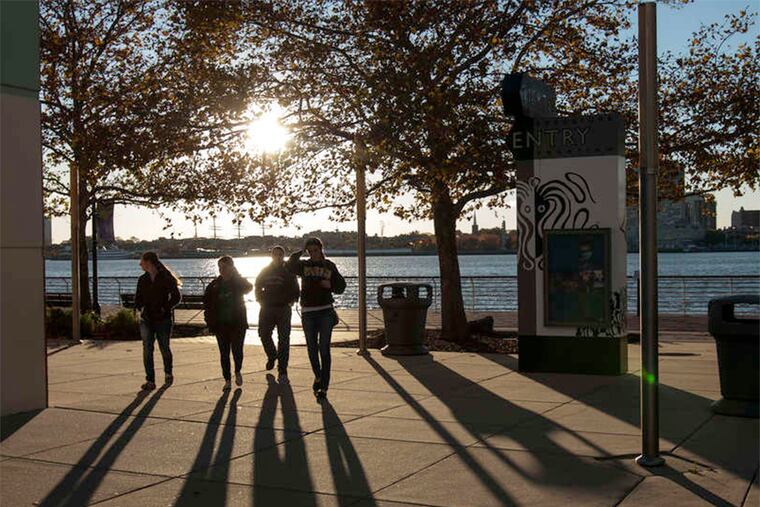Camden's latest comeback may not be mirage
In the 35 years I've been writing about Camden, the city has often appeared to be on the verge of a comeback.

In the 35 years I've been writing about Camden, the city has often appeared to be on the verge of a comeback.
But while a bit of skepticism is advisable - even amid the latest flurry of economic development announcements - I do get a sense of actual optimism in the air.
Because the latest proposals look stronger, smarter, more realistic, and less grandiose than many of their predecessors.
"I remember those grand announcements," says Cooper Health System Chairman George E. Norcross 3d. "Sadly, most of [them] never happened. But these are real."
Development of the Subaru corporate headquarters, a Lockheed-Martin laboratory, and the 76ers practice facility together will be underwritten by more than $300 million in tax credits, mostly through the state's Economic Opportunity Act.
Even with the public subsidies, the projects are votes of confidence in Camden's future by private enterprises that certainly are free to choose other locations. In a city long ago abandoned by most national retailers and name-brand companies, this is no small thing.
"It just feels like a good time for the city of Camden," says Richard Landers, vice president of tax and real estate for the Campbell Soup Company, whose world headquarters will be Subaru's neighbor in the Gateway Office Park near Admiral Wilson Boulevard.
The high-tech manufacturing facility and headquarters that the Holtec International company plans to build in the city - with $260 million in tax credits - also could have a major impact.
Particularly if Camden residents have a chance to train for the upward of 1,000 jobs we keep hearing Holtec may eventually bring to Camden.
"Holtec is the biggest and best example of opportunity for people who currently reside in the city," notes Norcross.
Says Camden County Freeholder Director Louis Cappelli Jr., "the Camden County Improvement Authority in collaboration with the county's business services team . . . has met with key representatives from Holtec" to discuss recruitment and training of potential workers for the new facility.
It's worth remembering, however, that in the 1990s, boosters predicted that the downtown waterfront (mostly built with public funds and largely exempt from conventional property taxes) could ultimately create thousands of jobs for city residents.
That hasn't happened, at least not yet.
"People have learned from the mistakes of the past," Norcross insists, adding that the new wave of development "isn't just the government building, a fish tank on the waterfront for the third time . . . there's a private capital buzz going on."
If the city is ever to wean itself from dependency on Trenton, more jobs, and an expanded tax base are essential.
Consider: In 1950, manufacturing accounted for 43,000 of the nearly 60,000 jobs within the city limits.
The total number of jobs in Camden is about half that now. And manufacturing jobs in the city have dwindled to around 2,000.
Meanwhile, major employers in today's Camden - many of which have used public funds to expand or build facilities - employ rather modest numbers of people who live in the city.
Of the Campbell Soup Company's 1,200 employees in Camden, only about 1 percent live there, the company says.
And in the much-discussed 'eds and meds' sector, 58 of the 1,379 members of the Rutgers-Camden workforce are Camden residents; 442 of Cooper Health System's 4,767 employees in Camden live in the city, and 292 of Lourdes Health System's 1,517 workers in the city are city residents, too.
"There should be an opportunity, as a result of all this development, to lift up people who live here, to prepare them with training," says Bridget Phifer, executive director of Parkside Business and Community in Partnership Inc.
The nonprofit community development corporation has identified local contractors and other workers who could participate in projects, including the state's planned $50 million renovation of Camden High - which, Phifer notes, is in Parkside.
Insisting "I'm not trying to paint a rosy picture," Phifer also says neighborhood groups such as hers have lately felt more included in the larger development efforts in the city.
The recent surge of projects "is different," Timothy Lizura, president of the N.J. Economic Development Authority, says. "There's now infrastructure in place to manage big projects, which gives private investors comfort.
"We're not claiming victory," he adds. "But I do think this is a tipping point."